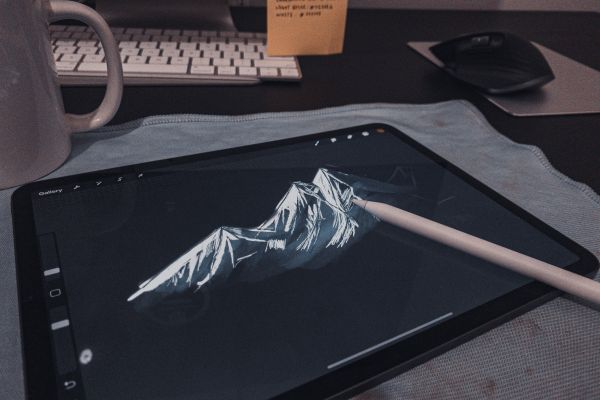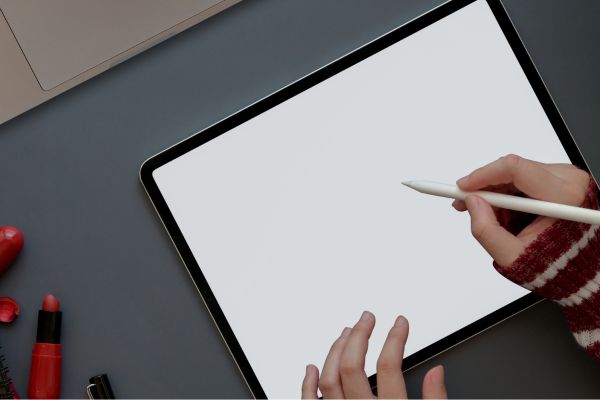Navigating the Design Universe: A Tools Guide for Freelancers
Welcome to our comprehensive guide to the world of design freelancing. If you are a design freelancer or aspiring to be one, this guide is packed with invaluable tips and tricks to enhance your career and elevate your craft. Whether you’re just starting out or looking to upskill, we will explore essential tools and strategies that will help you navigate the competitive field of design and achieve success as a freelancer.
As a design freelancer, you have the freedom to showcase your creativity and work on exciting projects. However, it’s important to arm yourself with the right tools and skills to stand out in the industry. With the right knowledge and resources, you can take your freelance design career to new heights.
In this guide, we’ll cover the importance of specialization for design freelancers and how it gives you a competitive edge in the market. We’ll also delve into building your professional brand and creating a strong identity that attracts clients. Additionally, we’ll provide you with a curated list of essential tools and software to streamline your workflow and enhance your productivity. Finally, we’ll explore effective client communication and project management techniques for design freelancers.
Whether you’re a seasoned design freelancer or just starting out, this guide is designed to equip you with the knowledge and tools you need to succeed. Let’s dive in and discover how you can thrive in the ever-evolving world of design freelancing.
Key Takeaways:
- Specializing in a specific niche or industry is crucial for design freelancers to establish themselves as experts.
- Building a strong professional brand helps attract clients and differentiate yourself in the market.
- Curating a set of essential tools and software boosts productivity and efficiency in your design work.
- Effective client communication and project management skills are vital for success as a freelancer.
- Continually refining your skills and staying updated with industry trends is key to thriving in the design freelance world.
The Importance of Specialization for Design Freelancers
As a design freelancer, specializing in a specific niche or industry is crucial for establishing yourself as an expert. By focusing your expertise on a particular area, you can differentiate yourself from the competition and position yourself as a go-to professional in your field.
Specialization allows you to hone your skills and knowledge, becoming well-versed in the specific challenges and nuances of your chosen niche. This level of expertise not only enhances your credibility but also instills confidence in potential clients, as they see you as a reliable and knowledgeable resource.
One of the key benefits of specialization is the ability to command higher rates for your services. When you are considered an authority in a particular area, clients are often willing to pay a premium for your expertise. This not only increases your earning potential as a design freelancer but also attracts higher-quality clients who understand and value the specialized skills you bring to the table.
Furthermore, specialization allows you to streamline your workflow and increase efficiency. By focusing on a specific niche, you become familiar with the common challenges and requirements of projects in that field. This familiarity enables you to develop reusable templates, design systems, and processes that can significantly speed up your work, saving you time and effort.
Specialization is no longer seen as limiting; instead, it is embraced as a strategic advantage for design freelancers. It allows you to stand out in a crowded marketplace, attract targeted clients, command higher rates, and work more efficiently.
Specialization Benefits for Design Freelancers
| Benefits | Description |
| Establish Yourself as an Expert | Showcases your specialized skills and knowledge, enhancing your credibility and attracting clients seeking experts in their niche. |
| Higher Earning Potential | Position yourself as a sought-after specialist, allowing you to command higher rates for your services and attract clients willing to invest in your expertise. |
| Increased Efficiency | Familiarity with the specific challenges and requirements of your niche enables you to develop templates and processes that streamline your workflow, saving you time and effort. |
Building Your Professional Brand as a Design Freelancer
In the competitive world of design freelancing, creating a strong brand identity is essential for attracting clients and standing out from the crowd. Building your professional brand encompasses various strategies that showcase your unique skills, style, and expertise. From designing an impressive portfolio to implementing effective branding techniques, here is a comprehensive guide to help you establish a compelling professional brand as a design freelancer.
1. Designing an Impressive Portfolio
Your portfolio is a visual representation of your skills and capabilities as a design freelancer. It must be visually appealing, user-friendly, and carefully curated to demonstrate your range of work and artistic flair. Highlight your best projects across different design disciplines to showcase your versatility. Invest time in crafting engaging case studies to provide potential clients with detailed insights into your design process and the impact of your work.
2. Defining Your Unique Skills and Style
Identify your unique strengths and design style that sets you apart from other freelancers. Determine the specific design disciplines you excel in, such as web design, logo design, or branding. Developing a niche expertise allows you to establish credibility and target specific client segments looking for specialized design services.
3. Implementing Branding Strategies
Just like you help clients build their brands, it is equally important to apply branding strategies to your own freelance business. Create a memorable logo, design a professional website, and establish consistent branding across all touchpoints, including your portfolio, social media profiles, and marketing materials. Consistency in visual elements, messaging, and tone of voice helps build recognition and trust among potential clients.
4. Enhancing Online Visibility
Utilize digital marketing strategies to increase your online visibility and reach potential clients. Leverage social media platforms, such as Instagram and Behance, to showcase your work and engage with the design community. Collaborate with influencers or thought leaders in the design industry to expand your network and gain exposure.
5. Providing Exceptional Client Experiences
Delivering exceptional client experiences is crucial for building a strong professional brand. Communicate clearly and proactively with clients, understand their needs, and provide timely updates throughout the design process. Exceed expectations by delivering high-quality work on time and within budget. Positive client testimonials and referrals will enhance your reputation as a reliable and talented design freelancer.
Table: Key Elements of Building Your Professional Brand
| Elements | Description |
| Design Portfolio | An impressive showcase of your best work across design disciplines. |
| Unique Skills and Style | Identify and highlight your unique strengths and design aesthetic. |
| Branding Strategies | Create consistent branding across all touchpoints to build recognition. |
| Online Visibility | Utilize digital marketing platforms to increase your online presence. |
| Client Experiences | Provide exceptional service by exceeding client expectations. |
Essential Tools for Design Freelancers
As a design freelancer, having the right tools at your disposal is essential for delivering high-quality work and maximizing your productivity. In this section, we’ll explore a curated list of must-have tools and software that every design freelancer should consider incorporating into their workflow.
Design Software
Software applications tailored specifically for design work are a design freelancer’s best friend. They provide the necessary features and functionality to bring your creative vision to life. Here are some popular design software options:
- Adobe Creative Cloud: A comprehensive suite of design applications, including Photoshop, Illustrator, and InDesign.
- Figma: A versatile digital design and prototyping tool for collaborative design projects.
- Sketch: A vector-based design tool favored by many UI and UX designers for its simplicity and powerful features.
Project Management Tools
Efficient project management is vital for design freelancers to stay organized and meet deadlines. Consider using these project management tools:
- Trello: A popular visual collaboration tool that helps you manage your projects and tasks with ease.
- Asana: A versatile project management platform that offers features such as task tracking, team collaboration, and project calendars.
- Jira: A robust project management tool often utilized by design teams working in agile environments.
Collaboration Tools
Collaboration is key to successful design freelancing. These tools facilitate seamless communication and collaboration with clients and team members:
- Slack: A messaging platform that enables real-time communication, file sharing, and project collaboration.
- Zoom: A video conferencing tool for virtual meetings, client presentations, and remote collaboration.
- Google Drive: A cloud storage and file sharing platform that allows you to collaborate on documents, presentations, and design files.
By incorporating these essential tools into your design freelance toolkit, you’ll be well-equipped to streamline your workflow, enhance your productivity, and deliver exceptional results to your clients. Now that you have the right tools, it’s time to delve into the world of effective client communication and project management in the next section.
Effective Client Communication and Project Management for Design Freelancers
As a design freelancer, your success depends not only on your creative abilities but also on your communication and project management skills. Being able to effectively communicate with clients and manage projects efficiently is essential for ensuring client satisfaction and delivering high-quality results. In this section, we will explore some techniques and strategies that can help you excel in client communication and project management.
1. Establish clear communication channels
Setting up clear communication channels with your clients is crucial from the start. Whether it’s through email, phone calls, or project management tools, establish a consistent means of communication that works best for both parties. This ensures that important project details, feedback, and updates are easily communicated and documented.
2. Listen actively and ask clarifying questions
Active listening is a skill that can greatly enhance client communication. Take the time to fully understand your client’s requirements, expectations, and goals for the project. Ask clarifying questions when needed to ensure that you’re on the same page. This not only helps you meet their needs effectively but also demonstrates your commitment to delivering results that align with their vision.
3. Set clear project objectives and timelines
Establishing clear project objectives and timelines is essential for effective project management. Define the scope of work, deliverables, and deadlines upfront, and communicate them clearly to your client. This helps manage expectations and allows for better planning and allocation of resources throughout the project.
4. Regularly update clients on project progress
Keeping your clients informed about the progress of their project is vital for maintaining trust and transparency. Whether it’s through progress reports, status meetings, or project management tools, provide regular updates on the project’s development, milestones achieved, and any potential challenges or changes. This helps clients feel involved and reassures them that their project is progressing according to plan.
5. Handle feedback and revisions professionally
Design projects often involve multiple rounds of feedback and revisions. When receiving feedback from clients, approach it professionally and with an open mind. Take the time to understand their perspective, address any concerns, and make necessary revisions. Effective communication during this phase is essential for ensuring client satisfaction and delivering a final product that exceeds their expectations.
By applying these techniques in client communication and project management, you can build strong relationships with your clients, deliver exceptional results, and establish yourself as a reliable design freelancer in the industry.
Congratulations on completing this comprehensive guide on navigating the world of design freelancing! By following the tips, strategies, and utilizing the essential tools provided, you are now well-equipped to take your freelance design career to the next level.
Remember, success in the design industry requires continuous refinement of your skills. Stay up-to-date with the latest industry trends and regularly seek opportunities to enhance your knowledge. Never stop pursuing your passion for design and always strive to deliver exceptional work that exceeds client expectations.
As you embark on your design freelancing journey, remember that building a strong professional brand and specializing in a niche will help you stand out from the competition. Leverage effective client communication and project management skills to foster strong relationships with your clients and ensure smooth project execution.
Lastly, always keep an open mind and embrace new challenges and opportunities that come your way. With dedication, perseverance, and a commitment to excellence, there’s no limit to what you can achieve as a design freelancer. Good luck!





